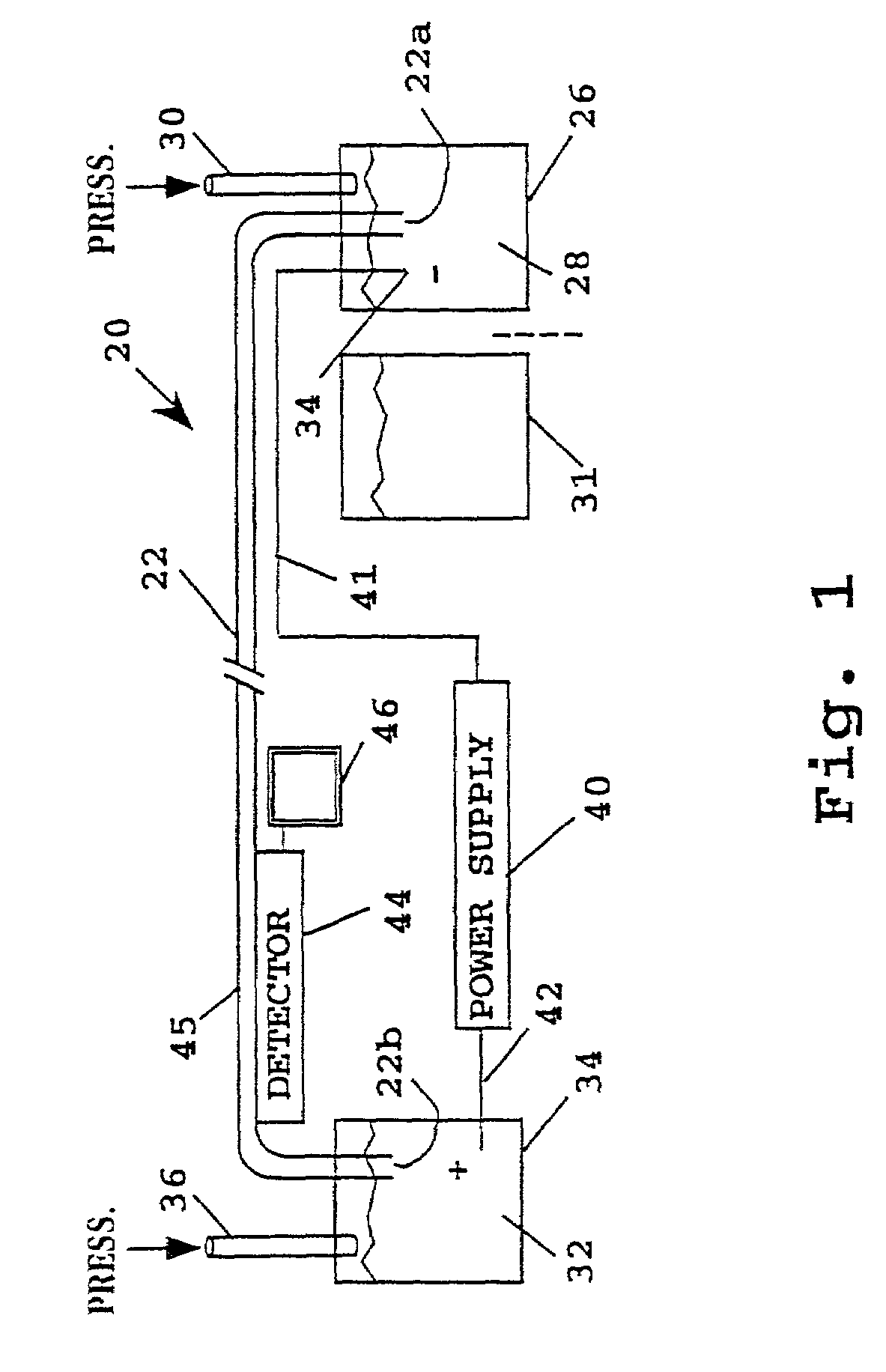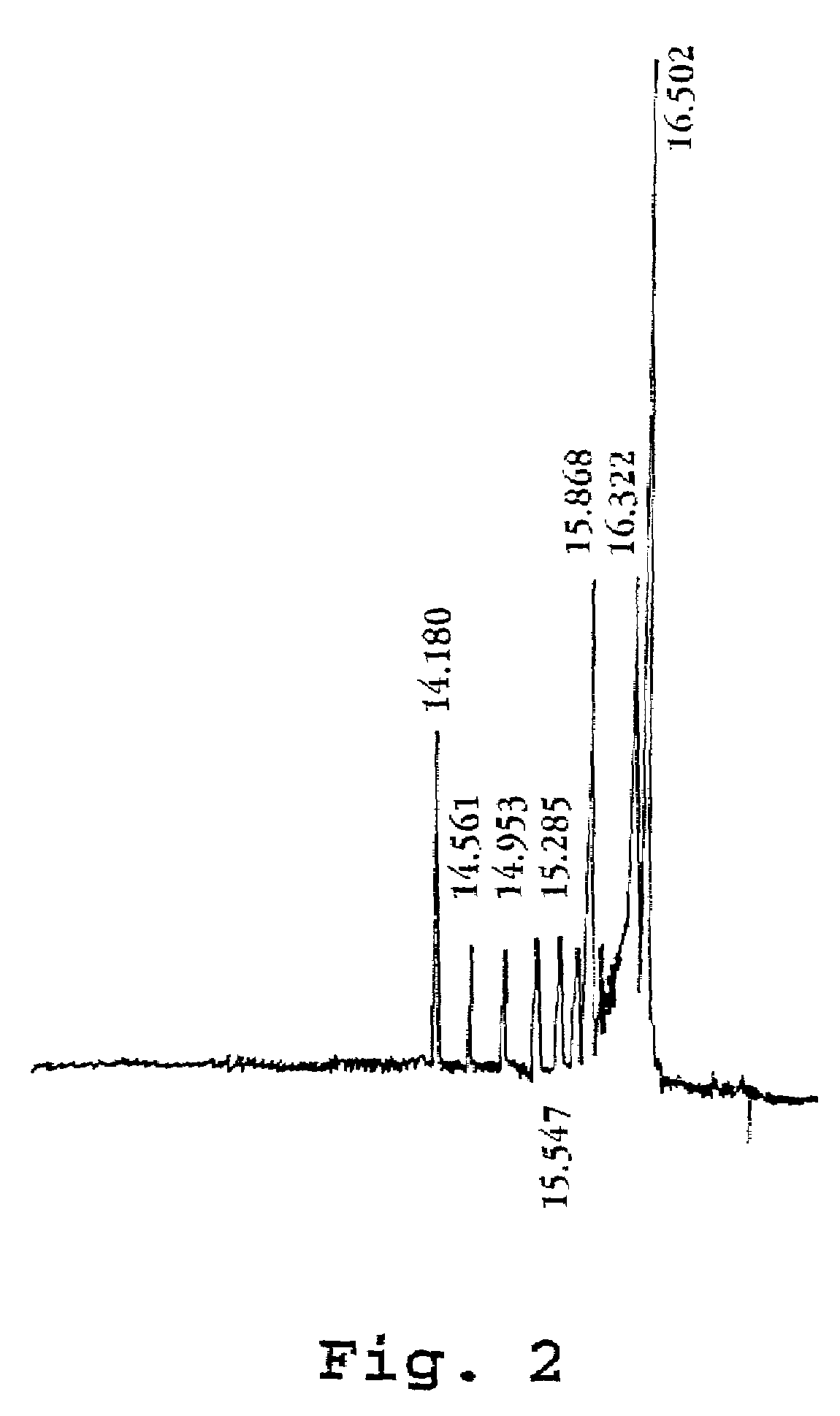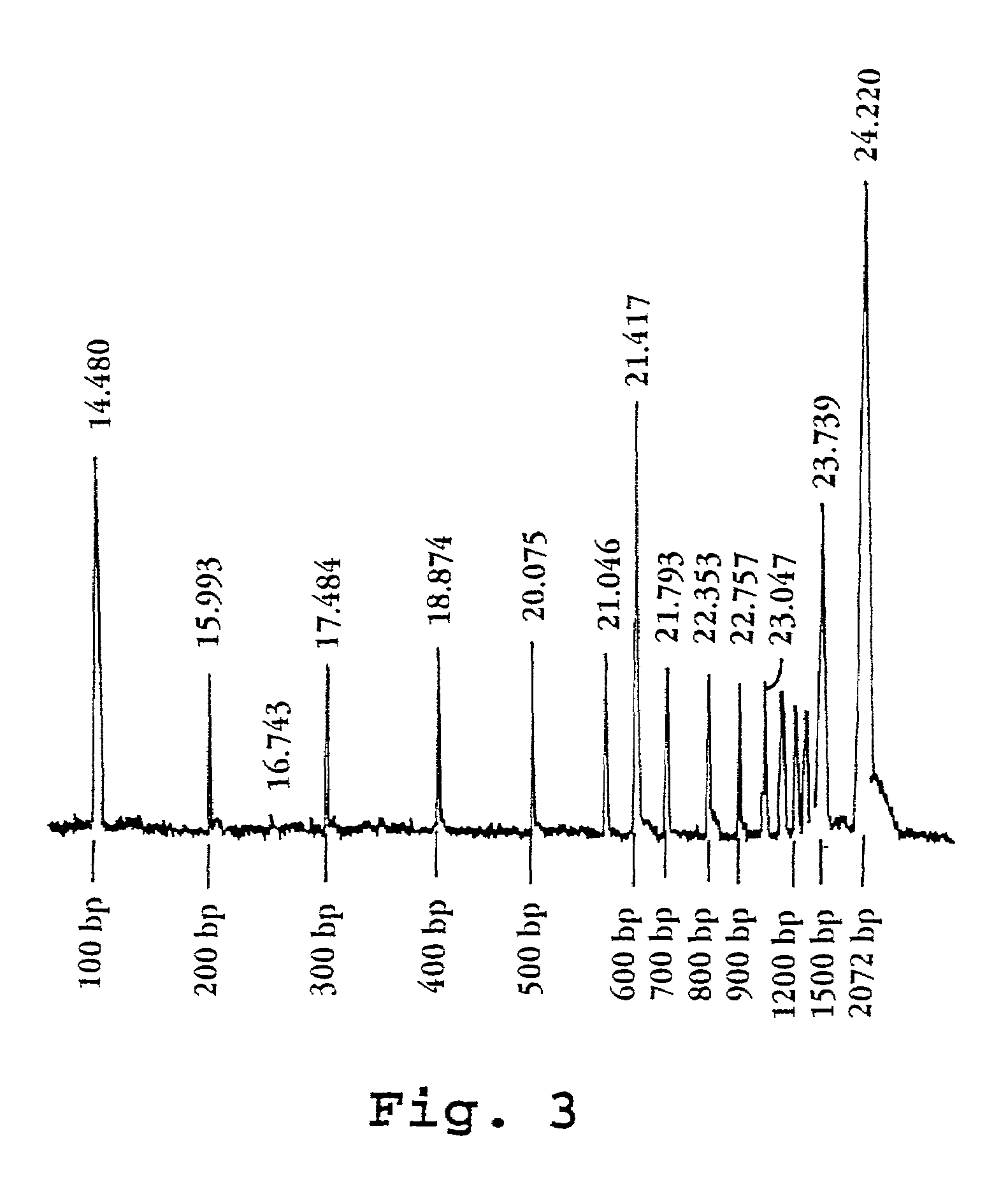Polymers for separation of biomolecules by capillary electrophoresis
a polymer and capillary electrophoresis technology, applied in the field of capillary electrophoresis, can solve the problems of affecting the application of capillary electrophoresis in impede the application of capillary electrophoresis to situations where high resolution separation is required, and most of these approaches have met with mixed success or only been used, and achieve the effect of dynamic suppression of electroendoosmotic flow and wall-an
- Summary
- Abstract
- Description
- Claims
- Application Information
AI Technical Summary
Benefits of technology
Problems solved by technology
Method used
Image
Examples
example 1
Synthesis of PDMA in Dioxane Using AIBN
[0049]Poly(N,N-dimethylacrylamide) (pDMA) is synthesized using conventional techniques, e.g. as disclosed in Trossarelli et al, J. Polymer Sci., 57:445–452 (1962). Known amounts of dimethylacrylamide (DMA), dioxane, and azobisisobutyronitrile (AIBN) were mixed in an Erlenmeyer flask and argon gas was bubbled through the solution for 10 minutes at room temperature. Polymerization was initiated by raising the temperature to 55° C. Polymerization times ranged from 10 to 25 minutes depending on the concentration of monomer. After polymerization, the resulting polymer was purified by three cycles of precipitation in hexane and dissolution in CH2Cl2. Finally, the hexane precipitate was dried overnight in a vacuum desiccator then lyophilized. The table below summarizes the reaction conditions for the various experiments.
[0050]
EstimatedConcentrationMonomerMolecularAverageBatch No.(% w / v)Dioxane (cc)AIBN (mg)Weight*RM17014.31279 kdRM26017.01492 kdRM3502...
example 2
Synthesis of PDMA in t-butyl Alcohol Using AIBN
[0051]Further polymerizations were carried out with t-butyl alcohol (t-BuOH) using the following protocol: Known amounts of DMA monomer, t-butyl alcohol, and AIBN were combined, and argon gas was bubbled through the solutions for 20 minutes. The mixtures were brought to 55° C. and allowed to polymerize for 15 minutes. The resulting polymers were isolated as described in Example 1. The table below summarizes the reaction conditions for the various experiments.
[0052]
EstimatedMonomerAverageBatchConcentrationAIBNMonomerMolecularNo.(% w / v)t-BuOH (cc)(mg)(g)WeightRM175020.01610 81 kdRM185060.05030107 kdRM197014.01210 99 kdRM217072.06050112 kd*Estimated by gel permeation chromatography (peak mol. wt.).
example 3
Change in Electroendoosmotic Flow in Test System by Various Poly(dimethylacrylamide) Solutions
[0053]The effect of various formulations of PDMA on electroendoosmotic flow in a test system was measured. The test system consisted of an Applied Biosystems model 270 HT capillary electrophoresis instrument configured in the following manner: Uncoated fused silica capillary 40 cm in total length, 20 cm to detector (UV), 75 μm inside diameter was installed; the separation medium consisted of a 0.1 M glycylglycine buffer (pH 8.0) with the test PDMA polymer added; a marker solution consisted of 0.92 mM mesityl oxide; and electrophoresis took place at 30° C. under 10 kV after electrokinetic loading as described above. The results are listed in the table below:
[0054]
Electroendo-osmoticPDMAConcentrationFlow*RM8 0.1% (w:v)7.38 × 10−5RM16 0.1% (w:v)2.73 × 10−5RM18**0.01% (w:v)1.98 × 10−5*cm2 / sec-volts**p-TSA (1 mM in H2O) used as marker.
PUM
| Property | Measurement | Unit |
|---|---|---|
| molecular weight | aaaaa | aaaaa |
| temperature | aaaaa | aaaaa |
| diameters | aaaaa | aaaaa |
Abstract
Description
Claims
Application Information
 Login to View More
Login to View More - R&D
- Intellectual Property
- Life Sciences
- Materials
- Tech Scout
- Unparalleled Data Quality
- Higher Quality Content
- 60% Fewer Hallucinations
Browse by: Latest US Patents, China's latest patents, Technical Efficacy Thesaurus, Application Domain, Technology Topic, Popular Technical Reports.
© 2025 PatSnap. All rights reserved.Legal|Privacy policy|Modern Slavery Act Transparency Statement|Sitemap|About US| Contact US: help@patsnap.com



